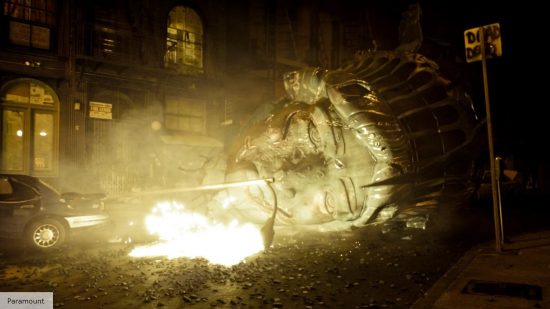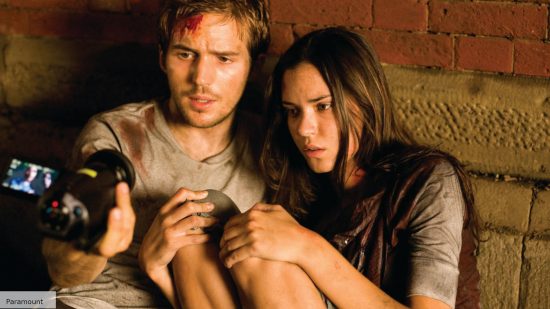Director Matt Reeves has been speaking to Collider on the 15th anniversary of the release of Cloverfield – a groundbreaking ‘found-footage’ science fiction movie. But it wasn’t just the movie itself that broke the mold, the marketing campaign was also highly unusual for the time. In fact they made the trailer to generate buzz about Cloverfield before they’d even written or shot the movie.
Nowadays, it’s not unusual for trailers to be released before the movie has been ‘picture-locked,’ which means that all of the editing has been finished. This can sometimes lead to scenes being featured in the trailer, but not the finished movie. However, trailers are generally made after the movie has been filmed, as that obviously provides the footage for said trailer.
This was not the case for Cloverfield, where the trailer served as more of a ‘proof of concept.’ Reeves – who would go onto direct Planet of the Apes and The Batman – told Collider; “they knew that we could have this prime spot on the Transformers’ release. So, the idea was to see if we could put together the trailer, to have it ready for then.”
“It was a trailer that would be before Transformers and everyone thought, ‘Well that’s probably going to be huge.’ That would be an amazing spot. But the other thing was that it was actually a test to see if we could make the movie. Because it was a handi-cam movie that was handheld with VFX. And so that was a test to see if we could do that.”
They ended up shooting the trailer, which features the Statue of Liberty’s decapitated head being thrown up a Manhattan street, then coming up with what would go before and after that moment in the movie. Then they inserted the trailer into the movie, as one of the scenes. As Reeves explains; “The other thing was, our budget was so tight that we were like, ‘Well gee, we’re going to do the head of the Statue of Liberty. This has to be the shot from the movie.’ But the movie wasn’t written yet…and we wouldn’t be able to afford to do that shot within the budget that we had. We borrowed some of marketing’s money to use it for the movie. So it was a crazy process.”
Reeves says that the hype generated by the trailer meant that the pressure was now on to deliver; “And then when the trailer came out, I remember going to see it, it was the 4th of July. It was so exciting. And then my first feeling was that I was thrilled, and then suddenly I was like, ‘Wait, this is horrifying, because we’ve shot a week and a half on this movie…I hope they like what this movie is, because we don’t even know what the movie is fully yet.'”

“So the whole thing was very, very unusual. I would say that it’s probably one of the few experiences that could be described in that way. I mean, to make a trailer for a movie that you haven’t shot yet, that hasn’t actually been written yet, and have it come out with Transformers and have the whole world react and then to know, ‘Oh God, now we have to make the movie.’ That’s a pretty weird high-wire act.”
Cloverfield was the second low-budget genre movie after The Blair Witch Project to rely on viral marketing before the internet was really the dominant force it is today. It generated strong word-of-mouth and hype before its release by approaching marketing differently to most movies. And it would go onto scare one Steven Spielberg.
Check out our guide to the best thriller movies.
